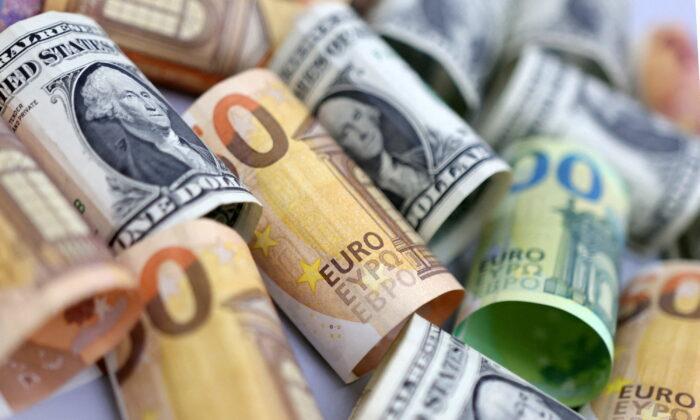LONDON—The U.S. dollar index edged lower on Tuesday but stuck close to levels reached this week in the wake of strong services data in the United States which fuelled expectations for higher interest rates than recently forecast.
The Australian dollar perked up from near one-week lows after the Reserve Bank of Australia (RBA) raised rates for the eighth time in as many months.
After recording its biggest rally in two weeks on Monday, the U.S. dollar index, which measures the currency against six major peers, was 0.1 percent lower at 105.05 at 1200 GMT.
It had dipped to 104.1 on Monday for the first time since June 28. It later reversed course after data showing U.S. services industry activity unexpectedly picked up in November, with employment rebounding.
“The longer the U.S. economy is robust the more doubts are probably going to increase as to whether the U.S. will actually face a recession next year and whether the U.S. central bank will actually cut its key rate at that stage,” said You-Na Park-Heger, FX Analyst at Commerzbank.
The Federal Open Market Committee decides policy on Dec. 15. Traders currently expect a half-point hike to a 4.25–4.5 percent policy band and a terminal rate of just above 5 percent in May.
The Aussie dollar rose 0.46 percent to $0.6729, clawing back some of Monday’s 1.4 percent fall as the RBA said it was not on a preset course to tighten policy but inflation was still high.
Euro Edges Higher
The single currency gained some ground trading 0.2 percent higher against the U.S. dollar at $1.0517 after on Monday touching its highest level since late June.European Central Bank policymaker Constantinos Herodotou said on Tuesday interest rates will go up again but are now “very near” their neutral level.
German industrial orders recovered more than expected in October. That immediately failed to strengthening the euro.
The Western price cap on Russian seaborne crude, which came into force on Monday, may start to show its impact on the energy market soon, said Francesco Pesole, FX strategist at ING.
“When adding an expected drop in temperatures in Europe from this week, the risks of a new rally in energy prices are non-negligible, and the euro is highly exposed to such risks,” he said.





